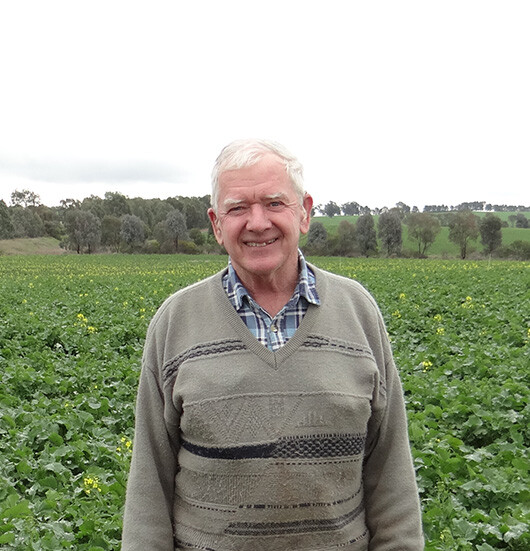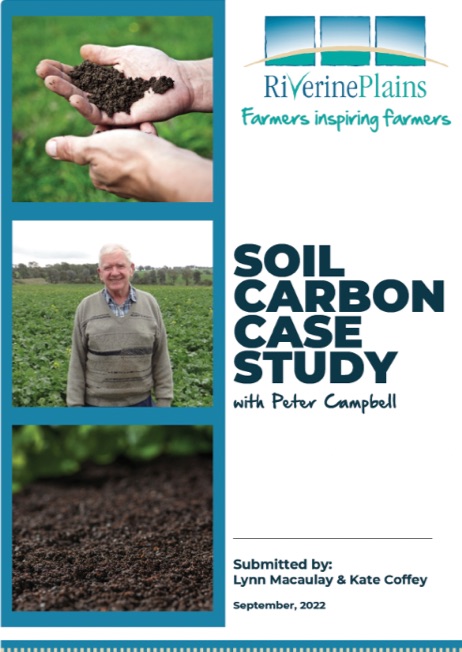Soil Carbon Case Study with Peter Campbell

Publication date
22 Nov 2022
Publication partner
This publication was supported by the Cool Soil Initiative and AgriFutures Australia.
LEARN HOW FARMERS ARE MANAGING THEIR SOIL CARBON AND IF IT HAS CHANGED IN THE PAST 5 YEARS
In this case study, Lynn our Member Engagement Officer, caught up with Peter Campbell to ask him about his soil carbon journey, including his involvement in the Cool Soil Initiative.
Key messages
Importance of cropping rotation:
- Including a pasture phase and/or pulses/legumes in the cropping rotation is crucial for maintaining and potentially building soil organic matter and nitrogen levels.
Soil health practices:
- Keeping good soil cover year-round promotes high microbial activity, enhancing overall soil health.
- Using stubble mulching and incorporation techniques can help increase soil organic matter and contributed to the maintenance of soil carbon levels.
Fertiliser application:
- Assessing the impact of post-harvest fertiliser application to mitigate potential nitrogen tie-up and its effect on soil carbon levels requires long-term studies (5-10 years). Balancing other soil nutrients is essential, and this practice might not always be cost-effective.
Impact of soil type and rainfall:
- Soil type and rainfall significantly influence soil carbon levels, with some soil types having limited capacity to increase soil carbon.
Practical insights:
- Case studies, such as that of Peter Campbell's farm, highlight real-world applications and challenges in managing soil carbon.
- Continuous monitoring and adapting practices based on soil tests and observations are key to maintaining soil carbon.
Challenges and adaptations:
- Financial viability and soil carbon improvement can sometimes be at odds; careful consideration is needed to balance these aspects.
- Exploring new approaches like companion cropping and cover crops, though dependent on local conditions, can offer potential benefits.
Future considerations:
- The potential for carbon markets and policies to impact farming practices is significant. Being prepared with evidence of sustainable practices can provide future benefits.
- Investigating the feasibility and benefits of practices such as reducing input costs through tighter rotations or incorporating livestock can be beneficial.
NEWS
Discover unique perspectives on agriculture from across the Riverine Plains.
-
Livestock
-
People
-
Grains
-
Sustainability

